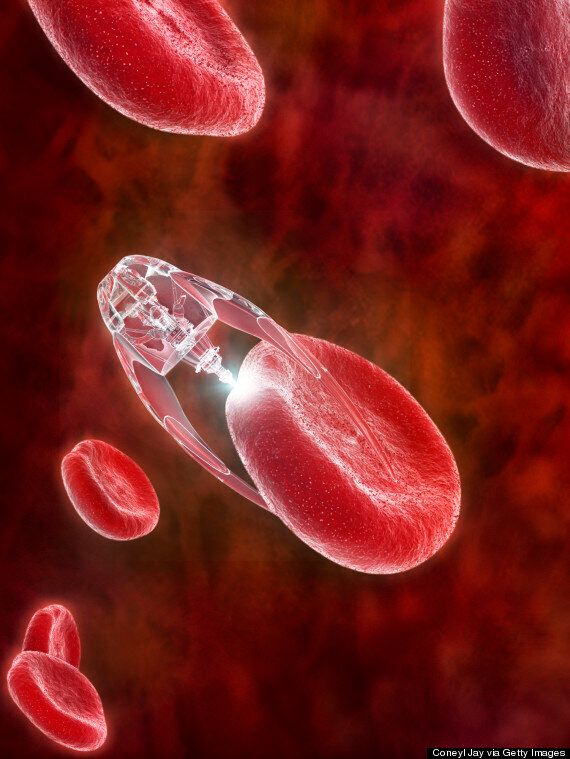Researchers have revealed that they're working on a tiny nanoparticle called a 'nanoporphyrin' which can diagnose and attack cancerous tumours.
In a study published in Nature, researchers report that these tiny weaponised robots can both identify malignant cells and attack them immediately, in theory creating an all-in-one solution to the disease.
The team at the University of California's Davis Cancer Center said that their breakthrough could make revolutionary anti-cancer nanotech affordable for the first time.

A key advantage of the new particle, known as 'nanoporphyrin', is that not only can it detect and attack cancer, it's also capable of making tumours more visible on MRI scans.
The tiny robot, which is just 30 billionths of a metre in length, is actually an organic compound which naturally points its 'head' outwards and its 'tail' inwards. The particles can be 'pre-loaded' at the tip with cancer-fighting drugs and automatically identify the right cells to attack.
The new technique is one of many attempts to use nano-tech to fight cancer. So far none have become mainstream, mainly because they're often expensive and difficult to make in large quantities.
However, now that researchers have found a way of creating a combined nano robot which can identify and attack cancers, the hope is that enough progress can be made to turn it into a realistic alternative to chemotherapy which is harmful to healthy tissue surrounding cancers.
For more details on the treatment and its background, there's a good write-up at Phys.org.